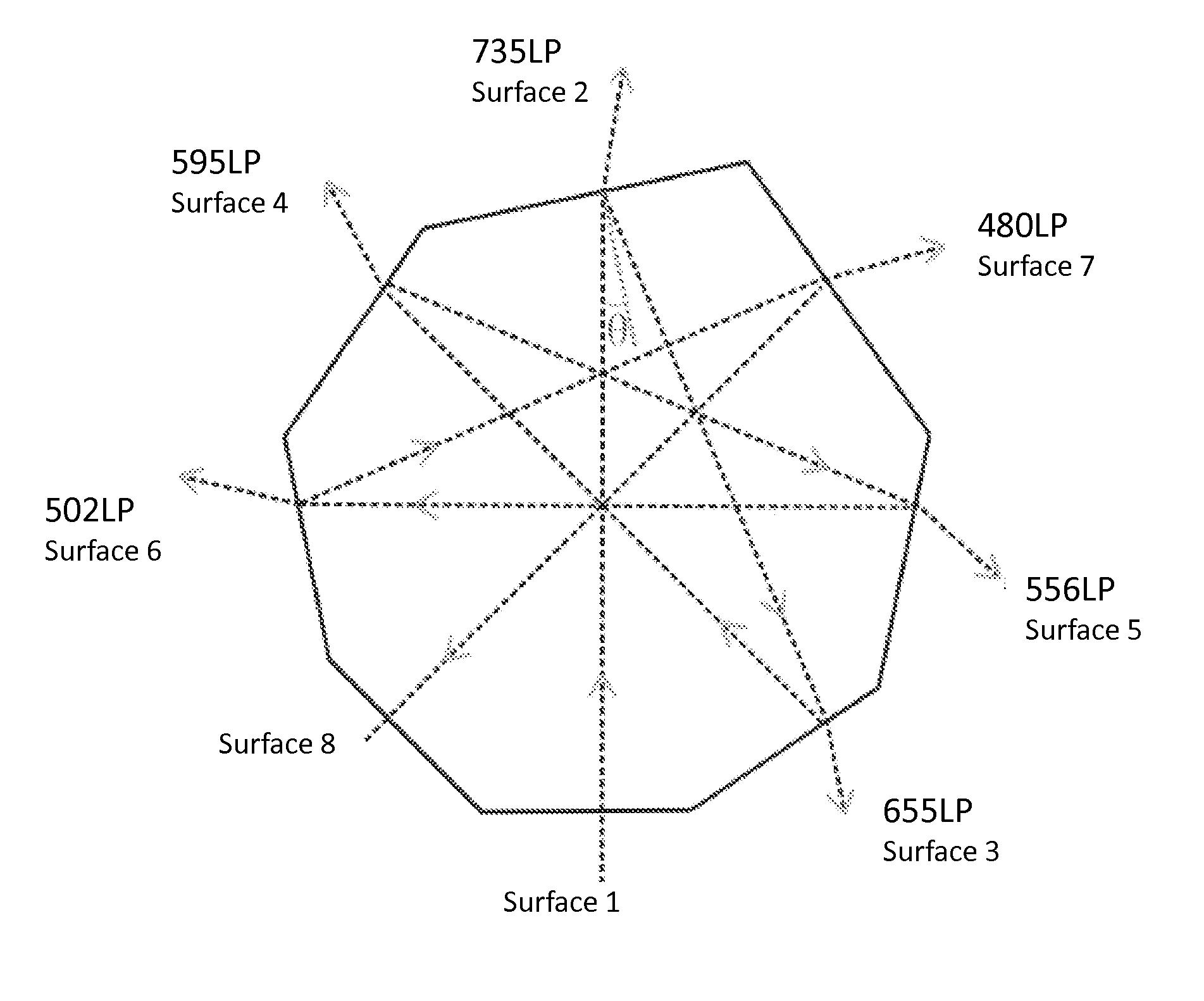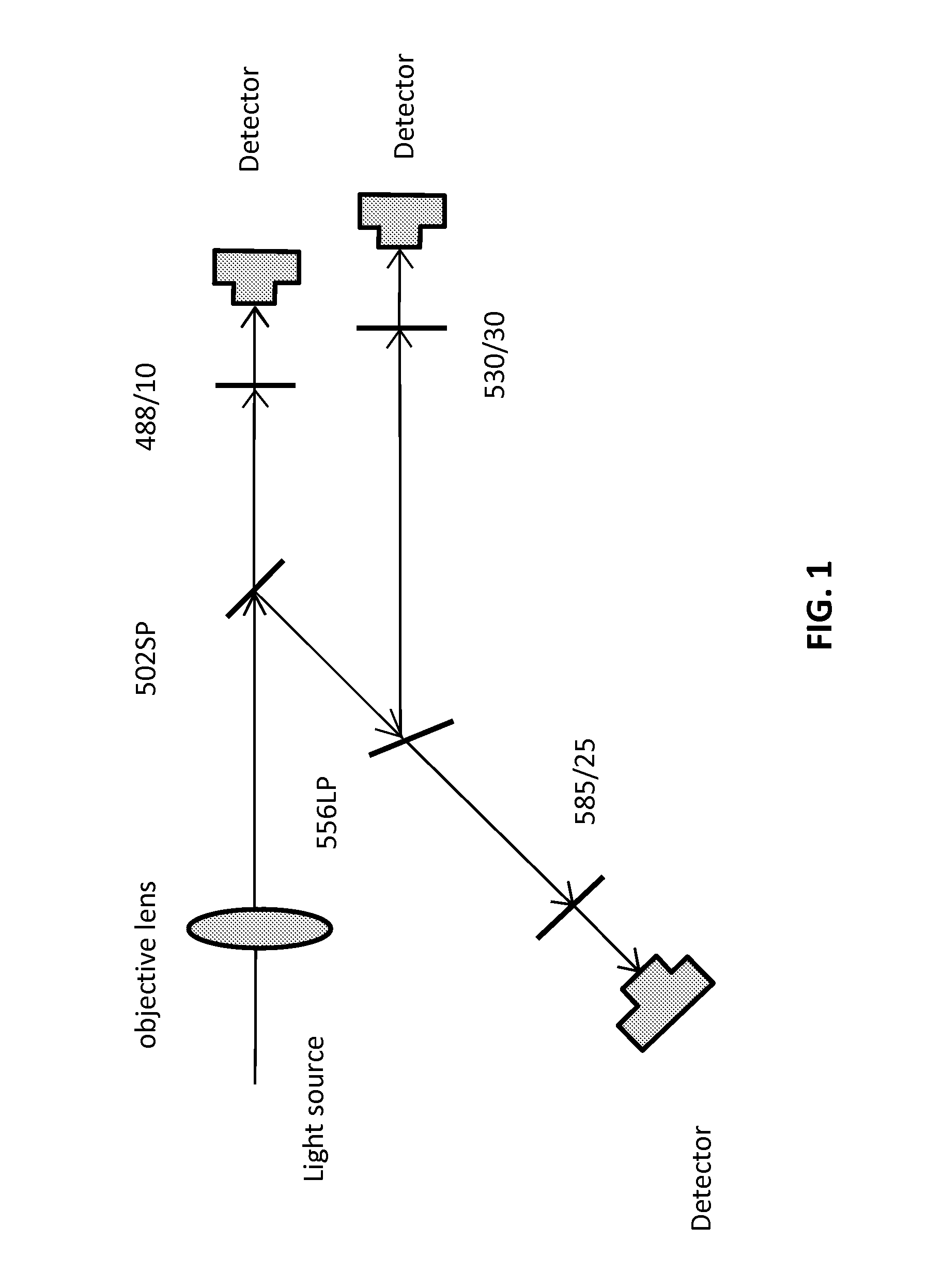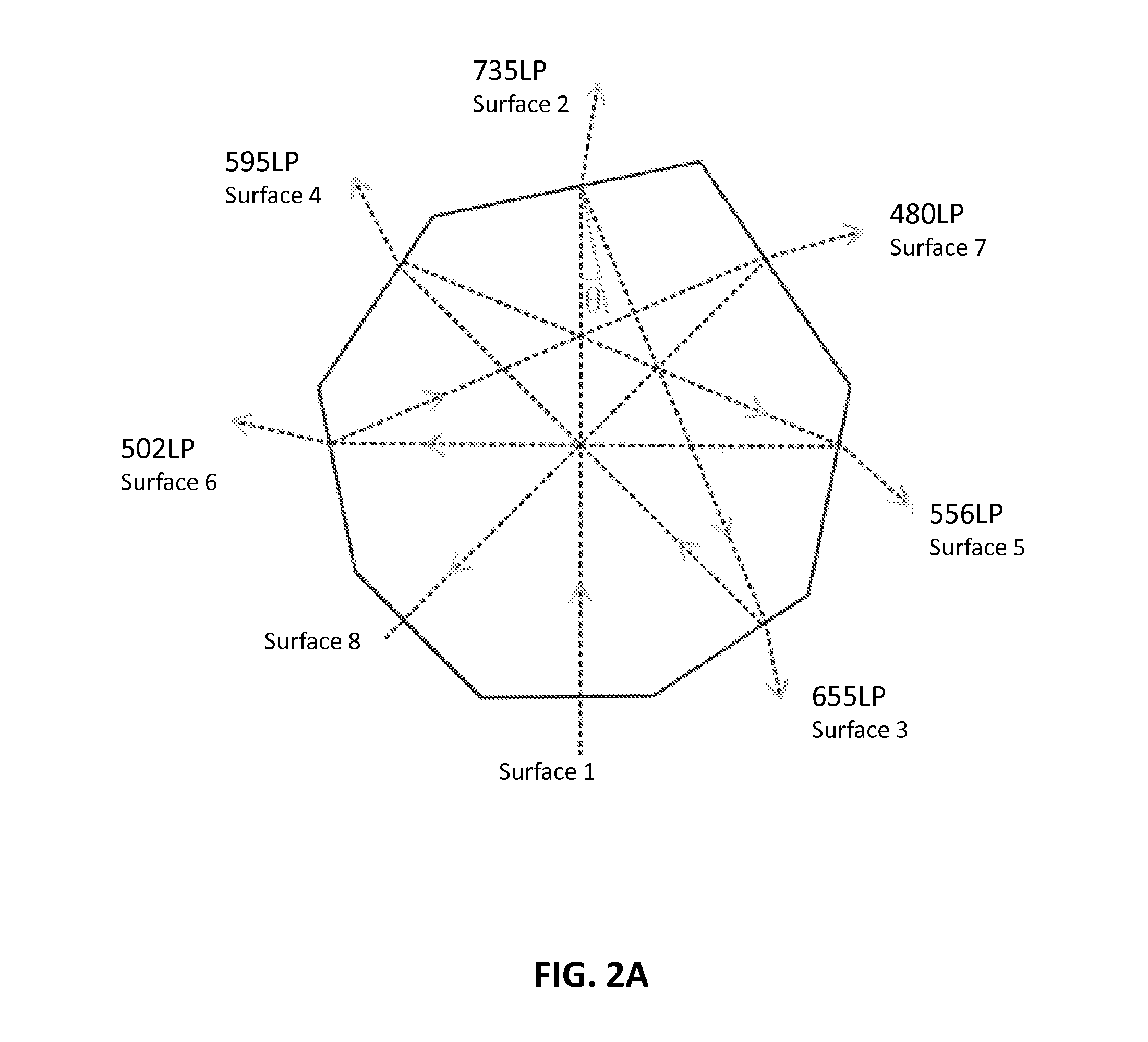Device for splitting light into components having different wavelength ranges and methods of use
a technology of light splitting and components, applied in the field of optics, can solve the problems of high component cost, complicated separation and detection of multi-color fluorescent wavelengths from total emission spectra due to multiple fluorescent labels, and achieve the effect of maximizing receipt or entry
- Summary
- Abstract
- Description
- Claims
- Application Information
AI Technical Summary
Benefits of technology
Problems solved by technology
Method used
Image
Examples
example 1
[0085]N-BK7 glass was shaped to form an eight-faced prism, a 3-dimensional representation of which is shown in FIG. 5A. The eight surfaces were shaped to the same geometrical dimensions as that shown in FIG. 2B. This prism was produced to show the light-splitting functionality of light-splitting prism of the present invention. To simplify the production process and to demonstrate the operational principle of the light-splitting prism, three surfaces were coated with optical coatings having short-pass or band-pass properties. The design requirements for Surface 2, 5 and 6 are provided in TABLE 1:
TABLE 1SurfaceNumberTransmission >90%Transmission = 50%Reflection >98%Surface #5480-495 nm503-513 nm514-820 nmSurface #2500-550 nm550-560 nm565-820 nmSurface #6550-620 nm635-645 nm660-820 nm
[0086]FIGS. 5B and 5C show the transmission and reflection spectra, respectively, for Surface #2 and Surface #5 of the prism produced based on the design requirement in above table. Transmission of 50% occ...
PUM
 Login to View More
Login to View More Abstract
Description
Claims
Application Information
 Login to View More
Login to View More - R&D
- Intellectual Property
- Life Sciences
- Materials
- Tech Scout
- Unparalleled Data Quality
- Higher Quality Content
- 60% Fewer Hallucinations
Browse by: Latest US Patents, China's latest patents, Technical Efficacy Thesaurus, Application Domain, Technology Topic, Popular Technical Reports.
© 2025 PatSnap. All rights reserved.Legal|Privacy policy|Modern Slavery Act Transparency Statement|Sitemap|About US| Contact US: help@patsnap.com



